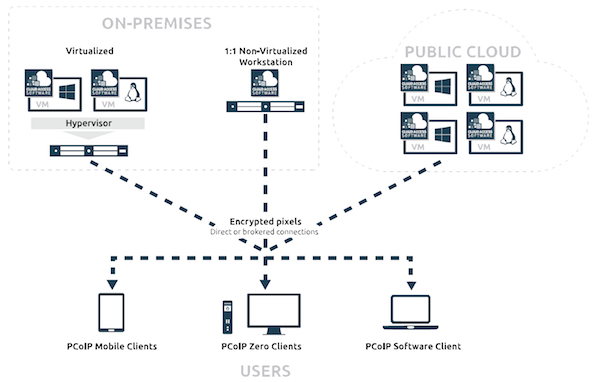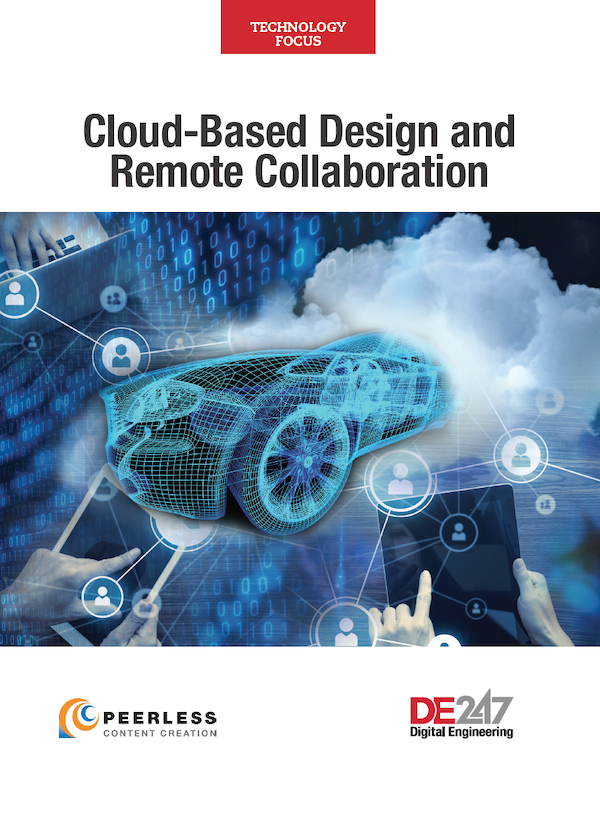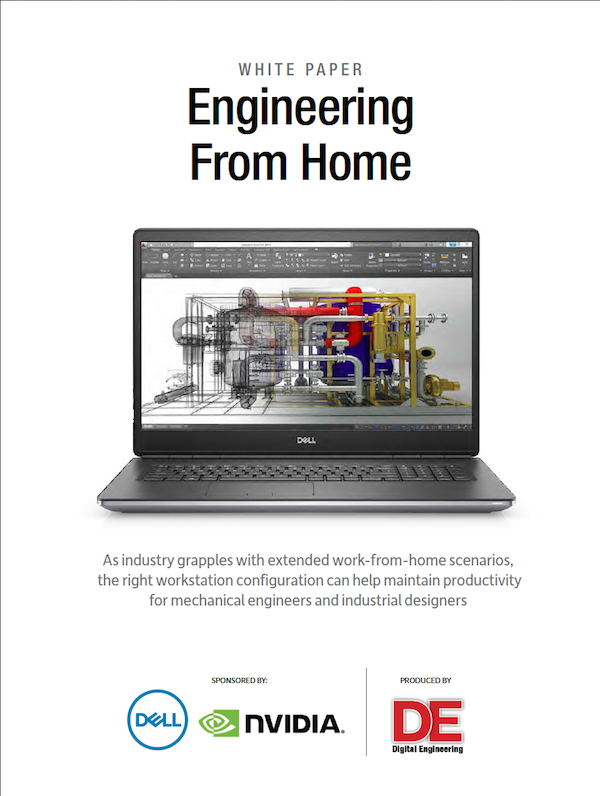
Latest News
March 27, 2021
As the COVID-19 pandemic grew throughout 2020 and into 2021, many engineering and architecture firms were forced to shift to a remote work or work-from-home model to stay productive. To find out more about how design and architecture firms handled the transition to remote work, we spoke to Ziad Lammam, VP, Product Management, at Teradici, a leading provider of remote, PC over IP (PCoIP) computing solutions. The company supports a hybrid cloud infrastructure for remote work and virtualization via its Teradici Cloud Access Software (CAS) and other products.
Can you explain at a high level how this type of virtualization works? What are the hardware/software requirements?
Ziad Lammam: So the environment that a typical customer would be using would depend on whether they were deploying the solution in their data center or in the public cloud. Currently in the AEC sector, we see most customers still choosing to deploy in the data center, and in fact that is still kind of a prominent deployment model across the board. Rather than using a physical workstation, which would have been on the user’s desk, organai oznats are centralizing the hardware in the data center.
The remoting solution is installed on the hardware in the data center. That allows you to light up virtual machines, and give the end user access to a full Windows or Linux desktop. The end users access the system through a number of client endpoints.
There is also a management plane that we provide called CAS Manager that allows you to provision virtual machines and connect users desktops to virtual workstations. If you choose to go the cloud route, you no longer have to worry about hardware, but you would follow a similar process in terms of deploying the host software.
From an end point perspective, we have software clients for any of the mainstream end points, using Windows, Linux or Mac, PC or laptop. If you want a more locked down environment, we do have a thin client option.
What were some of key challenges that architecture and engineering firms faced in making the transition to remote work in 2020?
Ziad Lammam: It has been across the board. AEC has unique requirements, but I would say that most industries, especially anyone doing high performance visualization, hit the same challenges. In AEC, the first and foremost thing is access to that 3D content. In the office, you are connected right there whether you are using Autodesk or Adobe or other tool sets. Working from home, with remote access to that same content, the challenge is if you are leaning on a remote solution that is not quite up to snuff in terms of being able to handle that content. You will see lag and performance issues. That is where a lot of the AEC customer base engaged with Teradici. They were looking for a high-performance 3D remoting solution.
The second challenge is about data confidentiality. Working in a remote office, it is a lot harder to police content and data. In AEC, firms are working with very sensitive client data, confidential client data. Bringing any of that actual data to a home device exposes those clients to leaks and confidentiality issues.
That was the big shock in moving to remote work for these companies. How could they keep their environment running without having to spend additional dollars. They need to keep operations going, but they did not budget for this.
For organizations that were not prepared in advance with a virtualization or remote plan, what would have been involved to implement something like this after the fact?
Ziad Lammam: Customers who were not quite prepared had to follow the same steps that someone who had a little more time would follow. The steps were the same but the urgency was faster. They had to quickly identify what infrastructure they were going to use to provide access to 3D content, and then what remoting solution they were going to use. In the past, they might have gone through a longer test cycle for that. Then you have to figure out the endpoint devices and how you are going to allow that access. One thing we saw come out of this pandemic is that once you arm end users with the right technology, their level of satisfaction is really high.
We have several examples of customers that leveraged our technology to do this in a home environment. One is Bartlett & West, and they deployed our solution for their at-home users. What they found was that the experience they could offer to users was really strong and positive, even over differing internet connects. All of the users had different connection speeds and bandwidth, and they could deliver a really good experience to their users. They didn't have to rely on traditional VPN technology.
The other one is with CLK Architects. They found many similar benefits. Both of these customers leverage workstations in their data centers. I know CLK leveraged Dell Precision workstations as well as NVIDIA GPUs. We have worked with Dell and NVIDIA to optimize solutions for their platforms and make sure you get the best 3D experience.
What do you think the key lessons are that your company learned in 2020, and that your customers learned?
Ziad Lammam: For Teradici, having been in the remoting space, we learned that even for us, the experts in the industry, we had to make some pivots to address the specific needs of remote work. Not drastic pivots, but we made some in terms of our product roadmap and even in terms of how we go about providing close, quick support to customers in this urgent crisis environment.
We made some pivots to do that. We quickly transitioned to our own remote work environment using our own technology. For our customers, I think the lesson was really ensuring that they have a remote, hybrid model in place. We know some people are back at that office, some organizations are planning for a hybrid model, but we all understand that remote work is here to stay. Having a remote hybrid work plan in place and testing it out well in advance, making sure your users are trained up on that, making sure have right hardware they need, all of those things are really important
Overall, we learned a few things. One is that the technology has proven that it is ready. While some firms weren't quite ready to jump into that swimming pool, those that did realized that they could swim with the right gear. Not only could they do this, but this new method of working opens up great business efficiencies. It is actually opening up productivity and efficiencies, and increased security for client content. It is even enabling things that a lot of our customers weren't quite expecting, such as access to global talent. With a remote environment, you can lean on freelance or global talent to make sure you can produce faster and at a better quality level, by finding resources you need no matter where they are.
Subscribe to our FREE magazine, FREE email newsletters or both!
Latest News
About the Author
Brian Albright is the editorial director of Digital Engineering. Contact him at de-editors@digitaleng.news.
Follow DE





